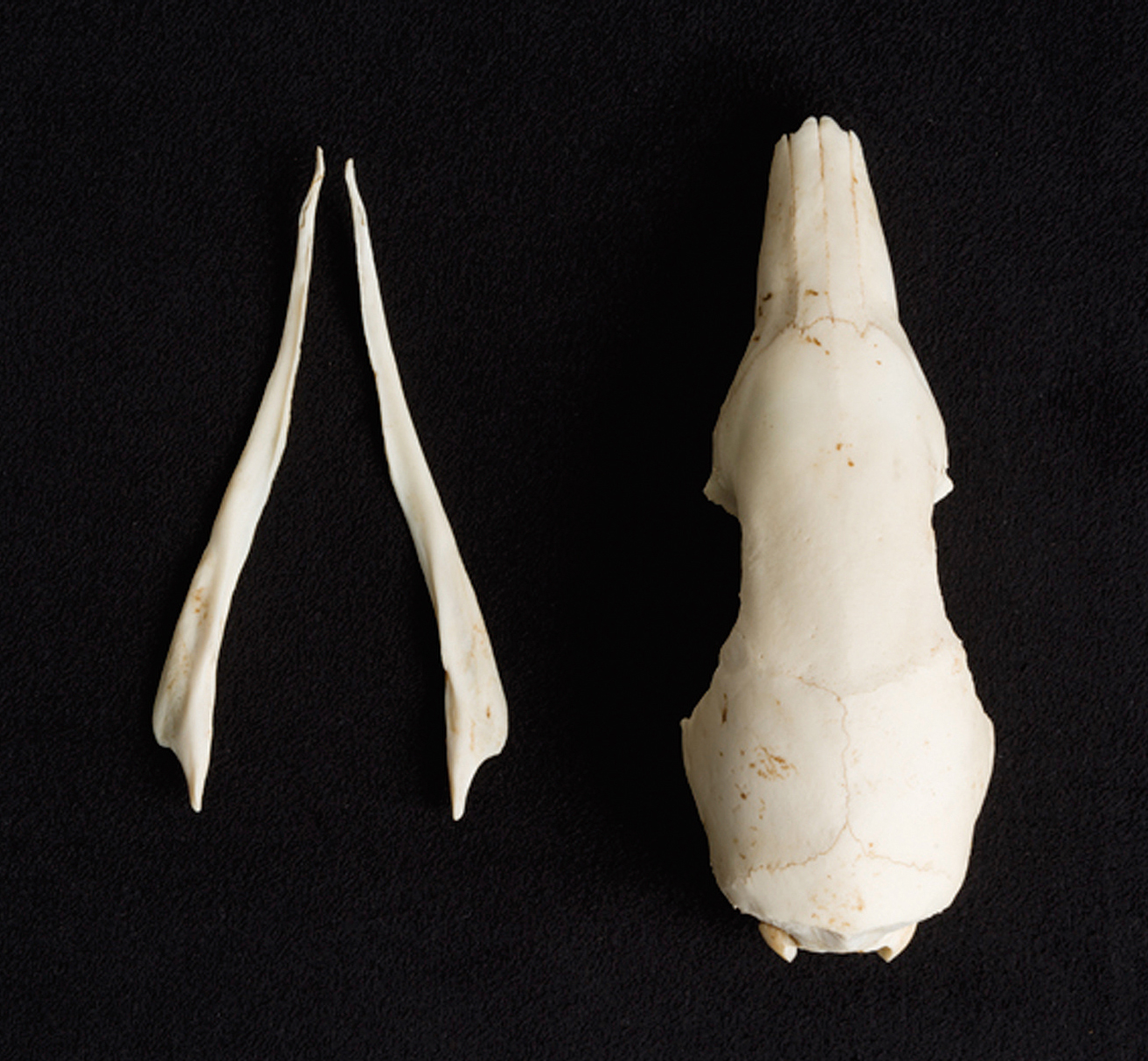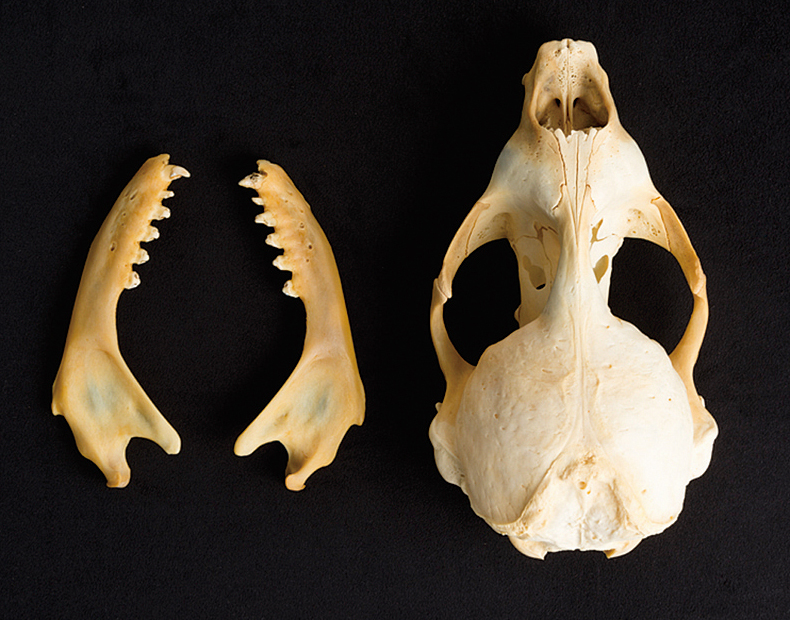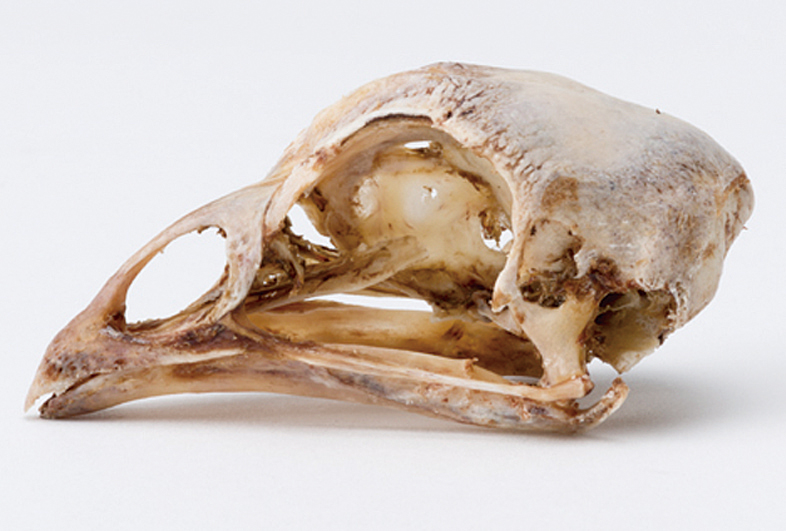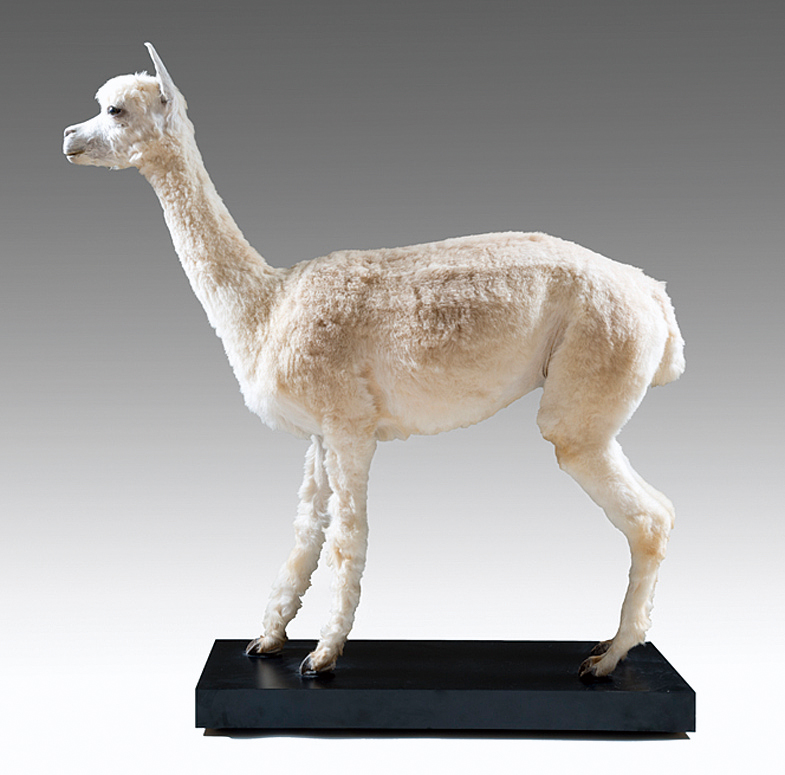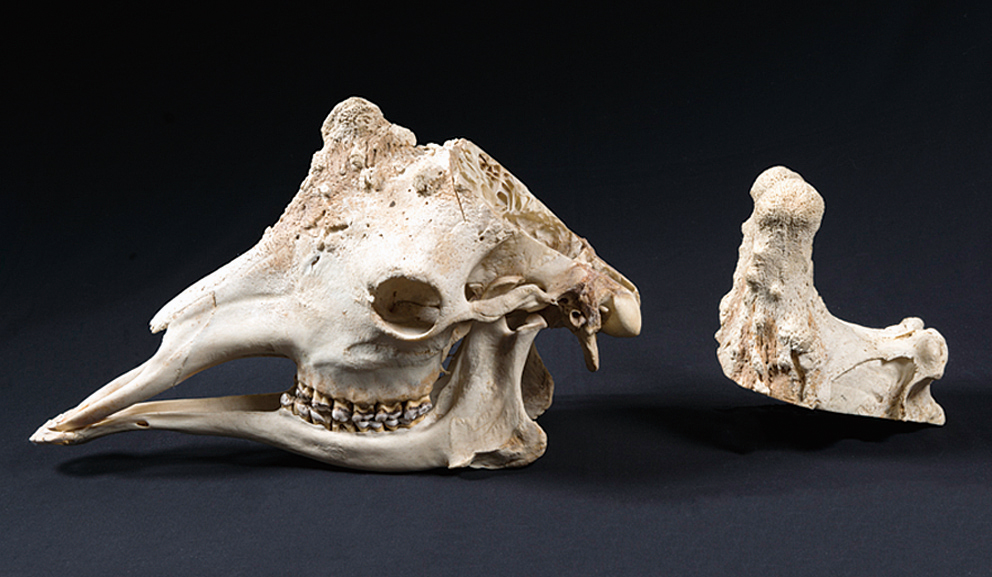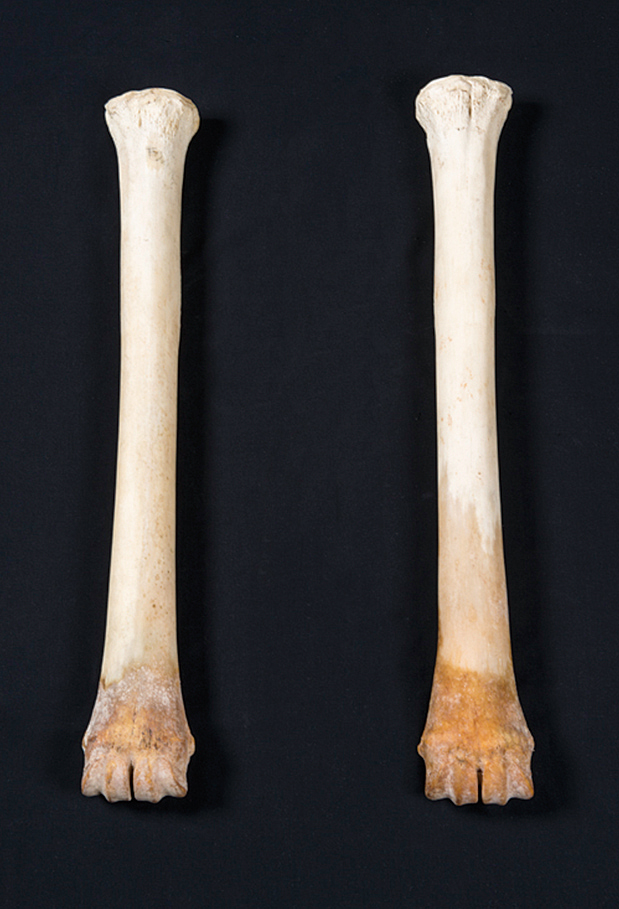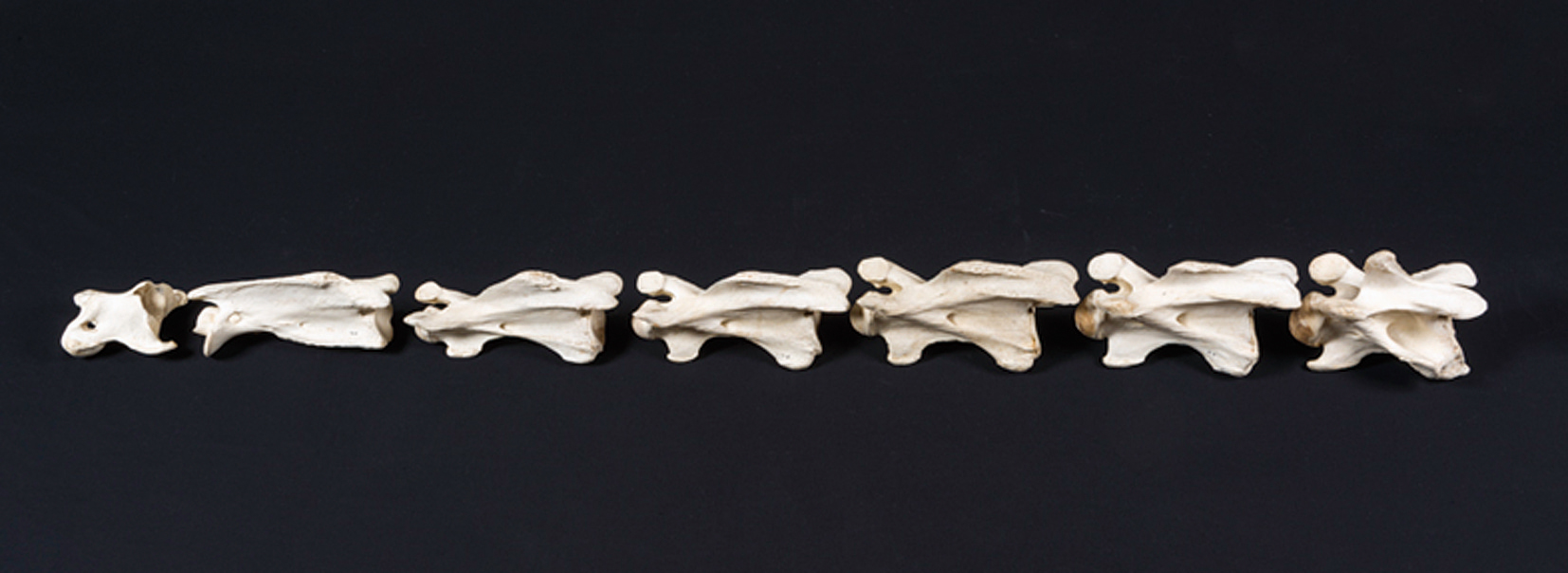E9
Second life of zoo animals
specimens at the forefront
Today, after death, animals in zoos also contribute to the elucidation of the evolutionary history of the body and the mechanism to support life. The southern tamandua (Tamandua tetradactyla) was donated from Chiba Zoological Park. The mandible of Vermilingua has attracted us because it comprises a specialized mastication mechanism. They never bite because it has no teeth. Instead the tamandua can medio-lateraly open and close the mandible. The species sends its long tongue according to the movement of the jaw, and it takes ants and termites into the esophagus. The information has been obtained from the giant anteater. It has been expected that the mechanism of mastication adapted to eat ants would be theorized in the Vermilingua. The skeleton specimen will be an essential key to establish the new theory.
The skeleton of the spotted seal (Phoca largha) was made of an individual that died at Futami Sea Paradise in Mie Prefecture. In the University Museum of the University of Tokyo, the swimming locomotion has been functional-morphologically investigated in seals and sea lions. This specimen was used for comparison with the other skeletons of seals and sea lions in the analyses of movement patterns of limbs.
Ingie is a breed of domestic fowl (Gallus gallus domesticus) that has been brought to Japan by the trade ship of the United Kingdom. It is said that, from a sailboat of UK in distress near Tanegashima Island in 1894, the fowls that were given as a reward of relief are the origin of the breed. We were donated a dead body of Ingie from Hirakawa Zoological Park (Kagoshima City). This skeleton is used in research and educational activities in the University Museum of the University of Tokyo. We are now analyzing the morphological characteristics of the breed by using the CT scanner.
This stuffed specimen of alpaca (Vicugna pacos) was made of an individual that died in zoo. This species belongs to the Camelidae of South America. It is rarely kept as livestock in Japan, so the opportunity is not much to see the fur specimen of the alpaca. Hair of the specimen does not extend sufficiently. However, this is a precious stuffed specimen to indicate a variety of livestock breeds.
The skeleton of the giraffe (Giraffa camelopardalis) is that of a male named “Kikutaka”. The individual is has been kept in Tama Zoological Garden (Tokyo) since 1971 until 1985. The skeleton was prepared in Tokyo University of Agriculture after death and donated to the University Museum. (Hieki Endo & Kusumi Mayu)

